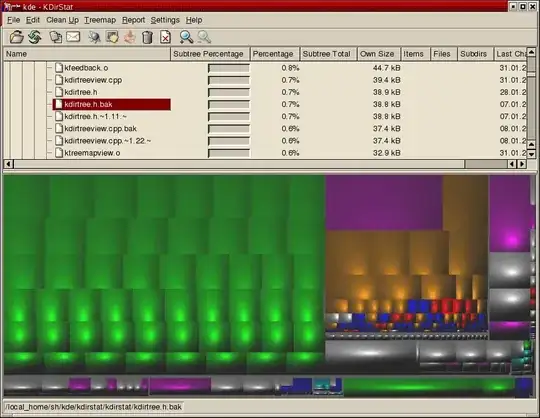There are some programs which can display used disk space using a treemap, such as WinDirStat for Windows and KDirStat for KDE/Linux:

I'm looking for something similar, but for a headless Linux box. (E.g. run console data collection program on the server, then load the file in a graphical program in a GUI environment.)
Alternatively, what are other good ways to get a structured used disk space representation, with just SSH access?